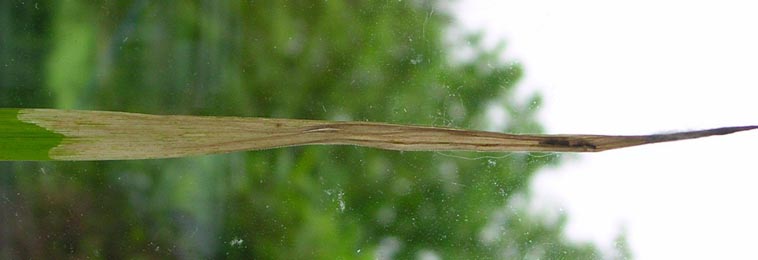|
||||||
|
LEYMUS. Lime-grass. [Poaceae] |
|
Four species of Leymus are recorded in Britain. These include the native Lime-grass (L. arenarius). Four British miners are recorded on Leymus. Nearly 100 British miners or possible miners are recorded on grasses in Britain. A key to the European miners recorded on Elymus including Leymus is provided in Bladmineerders van Europa. It is recommended that adults of all miners on grasses be reared to be certain of their identity. |
|
Key for the identification of the known mines of British |
1#> Leaf-miner. Details unknown. |
|
Elachista littoricola Le Marchand, 1938 [Lepidoptera: Elachistidae] |
1a > Leaf-miner: Broad elongated mine; the form is dependent of the leaf form of the host plant. Frass green. Usually a number of larvae together in a mine. Pupation in the mine. |
|
Cerodontha incisa (Meigen, 1830) [Diptera: Agromyzidae]. |
1b > Leaf-miner: Upper-surface corridor, generally in the upper half of the blade, running up to the leaf tip, usually occupying more then half the width of the leaf. Frass in green stripes at either side of the corridor. Never more than one larva in a mine. Puparium within the mine, metallic black, not anchered with a string of silk. |
|
| Cerodontha superciliosa (Zetterstedt, 1860) [Diptera: Agromyzidae]. |
1c > Leaf-miner: In autumn the larva makes a narrow corridor a few cm in length, in which it hibernates. In March it moves to a new leaf. Here a transparent, full depth mine is made that descends from the leaf tip, and occupies the entire width of the blade. Most frass is concentrated in the oldest, highest, part of the mine. The larva may leave its mine and restart elsewhere. Pupation outside the mine |
 Mine of Elachista argentella on Dactylis glomerata Image: © Ben Smart (British leafminers) |
|
Elachista argentella (Clerck, 1759) [Lepidoptera: Elachistidae]. |
| Last updated 05-Jul-2019 Brian Pitkin | ||
